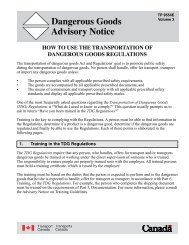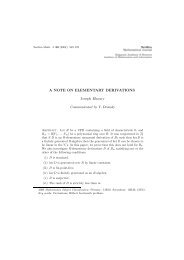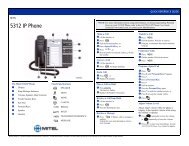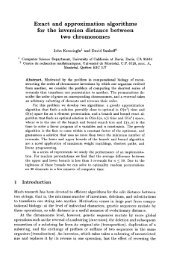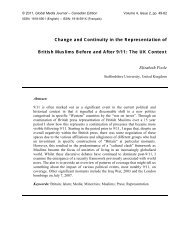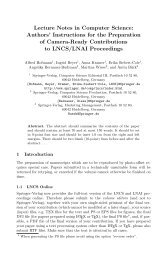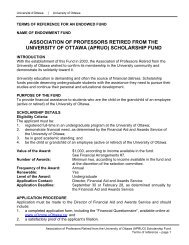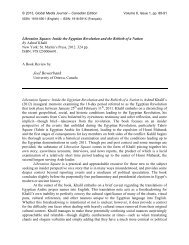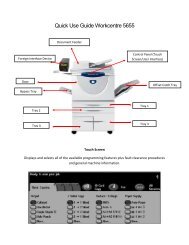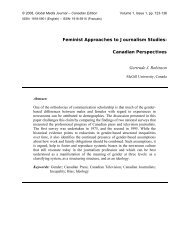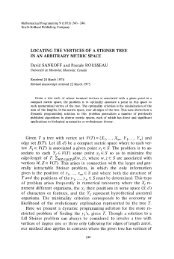PRACTICING PRECAUTION and ADAPTIVE MANAGEMENT ...
PRACTICING PRECAUTION and ADAPTIVE MANAGEMENT ...
PRACTICING PRECAUTION and ADAPTIVE MANAGEMENT ...
- No tags were found...
You also want an ePaper? Increase the reach of your titles
YUMPU automatically turns print PDFs into web optimized ePapers that Google loves.
IV.3.a Decisions are treated as scientific experiments (that is, are structured 0 1 2 3 4 5 6 7so as to allow testing of causal hypotheses).IV.3.b Past decisions are assumed to have been “correct” (i.e. are assumed 0 1 2 3 4 5 6 7to have had the desired effect) unless demonstrated otherwise.IV.3.c Predicted effects of alternative decisions are made explicit <strong>and</strong> 0 1 2 3 4 5 6 7considered.IV.3.d “Knowledge” accrued from past decisions is used to inform future 0 1 2 3 4 5 6 7decision- making.IV.3.e Data <strong>and</strong> information on the effects of previous decisions are analysed 0 1 2 3 4 5 6 7<strong>and</strong> assessed in a timely manner.IV.3.f Effects of previous decisions are systematically monitored. 0 1 2 3 4 5 6 7IV.3.g Predicted effects of decisions are systematically compared with 0 1 2 3 4 5 6 7observed effects as determined from monitoring or surveillance.IV.3.h Large discrepancies between observed <strong>and</strong> predicted effects of past 0 1 2 3 4 5 6 7decisions reduce the likelihood that the same decision will be madein the future.IV.4. Treatment of Decisions as Scientific Experiments: Score each of the following on afrequency/likelihood scale based on the extent to which it occurs in the decision-making processof the tribunal/agency in question:IV.4.a Experimental controls explicitly identified. 0 1 2 3 4 5 6 7IV.4.b Experimental controls implicitly identified. 0 1 2 3 4 5 6 7IV.4.c Controls considered to be current state of the receiving system 0 1 2 3 4 5 6 7(e.g. the system in which the activities in question will occur).IV.4.e Controls considered to be the current state of the receiving system 0 1 2 3 4 5 6 7as well as the current state of a non-receiving system.IV.4.f Predicted impacts/effects are specified explicitly. 0 1 2 3 4 5 6 7IV.4.g Observed impacts/effects are compared to predicted impacts. 0 1 2 3 4 5 6 7IV.5. Use of Follow-up Monitoring to Assess Outcomes <strong>and</strong> Impacts of Decisions. Score each of thefollowing (except (b)) on a frequency/likelihood scale (0-7) based on the extent to which itoccurs in the decision-making process of the tribunal/agency in question:IV.5.a Follow-up monitoring of tribunal/agency decisions. 0 1 2 3 4 5 6 7IV.5.b Monitoring of actual experience of a licensed/approved product,substance, or process is m<strong>and</strong>atory. Yes NoIV.5.c Monitoring requirements are included as conditions in the tribunal 0 1 2 3 4 5 6 7or agency decisions.IV.5.d Terms of reference for monitoring (what should be monitored; 0 1 2 3 4 5 6 7reporting structure etc) are specified by the tribunal/agency.IV.5.e Protocols for monitoring (where, when, duration etc) are specified 0 1 2 3 4 5 6 7by the tribunal/agency.IV.5.f Monitoring is conducted on a spatial <strong>and</strong> temporal scale over 0 1 2 3 4 5 6 7which adverse effects might reasonably be expected to occur.Appendix ii – Institutional Que stionnaire G - 20



